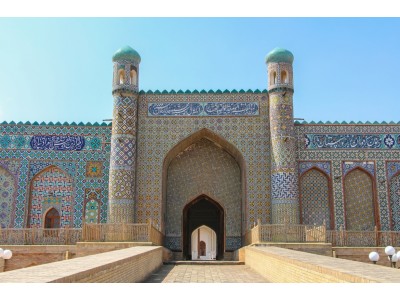
Kokand is a small but very interesting and important city with a long history, situated in the famous Fergana Valley 250 km east of the capital of Uzbekistan, Tashkent. Like many other towns and cities in the Fergana Valley, Kokand formerly known as Khovakand and Kavakend sprang up in a densely populated oasis on an ancient caravan route, which, according to 10th-century sources, ran through all major settlements in the valley. Local people were mostly engaged in crafts, agriculture and serving and guarding caravans. In the 13th century the Mongols destroyed the city. According to written sources, ruler Abdu-Raim Beg revived the city of Kokand (Khuk-kon) in 1732, and in 1740 the city was made the capital of the Khanate of Kokand and given its present name. Kokand reached its peak in the mid-19th century, when the city dominated extensive territories in present-day Uzbekistan, Tajikistan and Kyrgyzstan, including the city of Tashkent. Very often the epithet ‘latif’ was added to the city’s name, which translates from Arab as ‘nice’ or ‘pleasant.’ In 1876 General Skobelev’s army captured Kokand and the city became a part of the Russian Empire. Today Kokand is a green and cosy modern city with a population of about 250 thousand people. Kokand has long been famous for its arts, crafts, literature, culture and education. more...
Kokand’s places of interest and historical monuments
The Khudoyar-khan (Urda) Palace is a magnificent architectural complex, which was the residence of Khudoyar Khan, the last ruler of the Khanate of Kokand. The palace was constructed in 1871 following basic Central Asian architectural traditions: a large entrance portal with a broad archway in the middle of the building was flanked by two minarets, while other two turrets marked the southern and northern ends of the façade. The construction work involved 16 thousand workers, 80 masters and 1,000 carts. The palace was to outshine those of the rulers of Bukhara and Khiva. Enclosed in an openwork stone fence, the Khudoyar Khan Palace consisted of 7 small courts and 119 rooms. The entire structure, whose foundations were raised 3 m above the ground level, occupied an area of 4 ha. Above the main gates there was an inscription in Arab: ‘the great Seid Muhammad Khudoyar Khan.’ The diverse and splendid decoration of the Khudoyar Khan Palace continues to strike our imagination even today. The building’s façade actually dazzles the visitors with its bright colours and diverse ornamentation – geometric and plant patterns and arabesques composed of ceramic tiles. The patterns filling the niches make up compositions which never repeat themselves from niche to niche. The brightness and diversity of the colours on the façade make the structure look like a palace from an oriental fairytale. The palace’s interior decoration is also rich and splendid: each of the numerous rooms was decorated with fine fretwork in ganch and ornamental painting. The rooms of the khan and his family, the harem for 40 concubines and the throne and reception rooms were particularly luxurious. Fretwork in wood is one of the most common types of decoration for the ceremonial rooms of the palace complex. The best example of this type of decorative design can be found on the ceiling of the throne room, whose noble colours range from golden to brown.
Unfortunately, only two courts and 19 rooms are what remains today from the once grandiose royal residence. Currently the palace’s rooms house a museum of regional studies, whose exhibits can tell us about the past and present of Kokand.
The Jami Mosque (Friday, cathedral mosque) was built by order of Omarkhan around 1800 to become one of Kokand’s most significant religious constructions. The mosque is an elongated structure resembling the iwan, 97.5 x 25.5 m in size, walled on three sides, with a hall with three rows of columns in the centre. The mosque’s ceiling was decorated with many-coloured painting. The building also features a 22-metre minaret, which has been preserved to our days. The Jami Mosque ranks as the city’s most beautiful construction.
The Nurbutabiy Khan Madrasah is another prominent religious building built by a master from Bukhara named Usto Kasimjan in 1799. The construction was initiated by Nurbutabiy, the son of Omarkhan and the most famous khan of Kokand. Islamic higher schools (madrasahs) were often built in the so called ‘kosh’ (double) style, which consisted in placing two constructions opposite each other. This manner is most often observed in Kokand's madrasahs. So the Nurbutabiy Khan Madrasah consisting of a single building is the only exception. The building bears almost no ornamentation, which is the madrasah’s main distinguishing feature. The main doors covered with fretwork (geometric and plant patterns) are the only decorated elements of this austere and ascetic baked-brick construction, contrasting sharply with the smooth and plain brickwork. Inside the walls are plastered with white ganch (alabaster). Stalactite cornices and a mihrab decorated with a starry pattern look quite beautiful on the white background.
The Dahmai-i-Jahon Necropolis consists of two family vaults, one of which was for the burial of women and the other the men of the family of Kokand's khans. The mausoleum situated close to the Nurbutabiy Khan Madrasah was erected in the 19th century, in the reign of Omarkhan, who was buried right there in 1822. The tomb consists of three parts: a domed prayer room with a monumental portal, an iwan-type mosque on two columns and a crypt.
The Madarikhan Mausoleum. The architectural décor of this tomb is yet finer. The family mausoleum built in 1825 was the burial place for the women of the khan’s family and those representing the city’s uppermost nobility. The mausoleum was initially meant for Mokhlar Oyim, Omarkhan's wife and a talented poetess who became famous under the penname of Nodira. Female mausoleums are quite rare for the Muslim world.
Tourists may take an interest in other architectural monuments and places of interest in Kokand, such as the
Emir Madrasah (18th century) and
Kamol Kazi Madrasah (19th century).
Kokand photos
 Posted by
Centralasia Adventures
Posted by
Centralasia Adventures
Touristic company “Asia adventures” - DMC operator in Central Asia.
Already 26 years, we organize any possible tours in Uzbekistan and other neighbor republics as Kazakhstan, Kyrgyzstan, Turkmenistan, Tajikistan, Kashgar (Western China) and the Caucasian region (Azerbaijan, Georgia, Armenia).
Kokand on map


 Centralasia Adventures
+998712544100
Centralasia Adventures
+998712544100




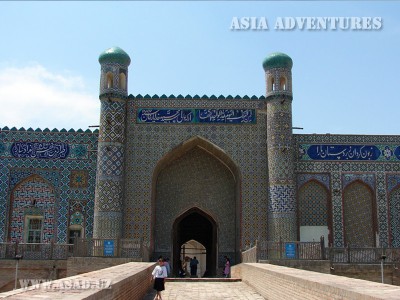
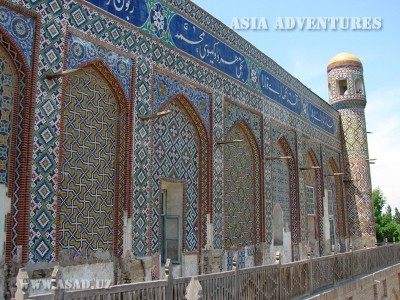
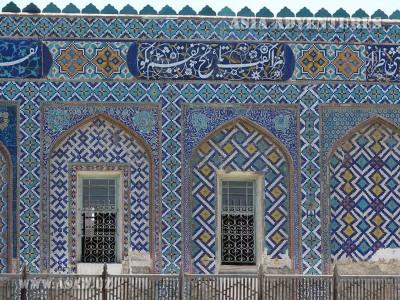
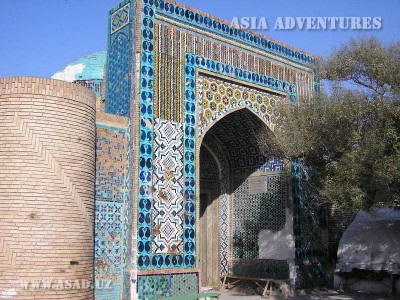
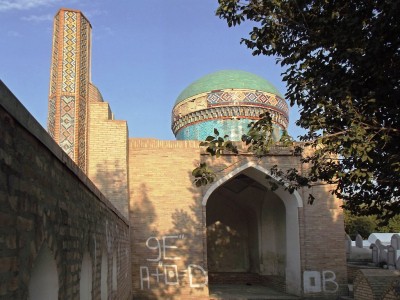
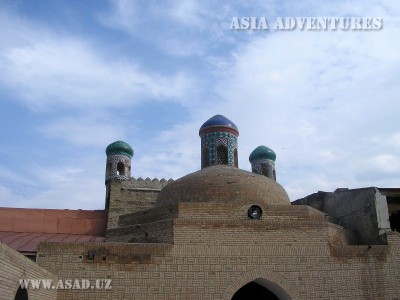
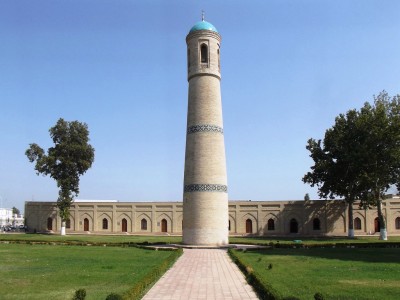
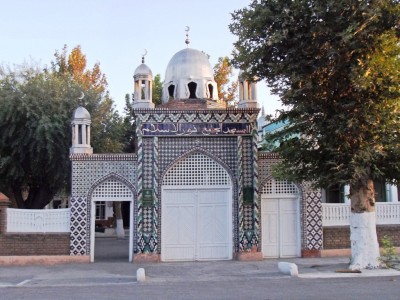
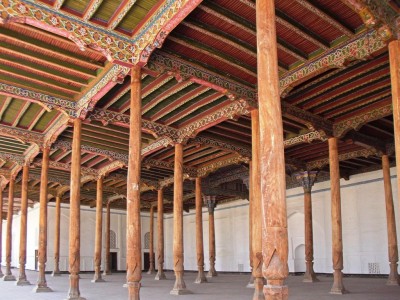
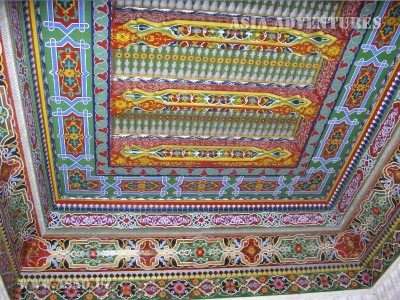
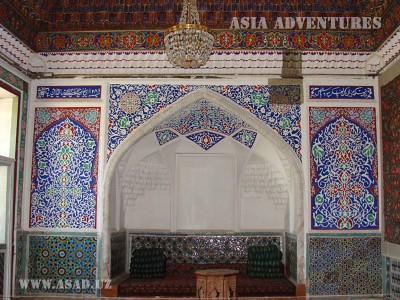

 Posted by
Posted by

